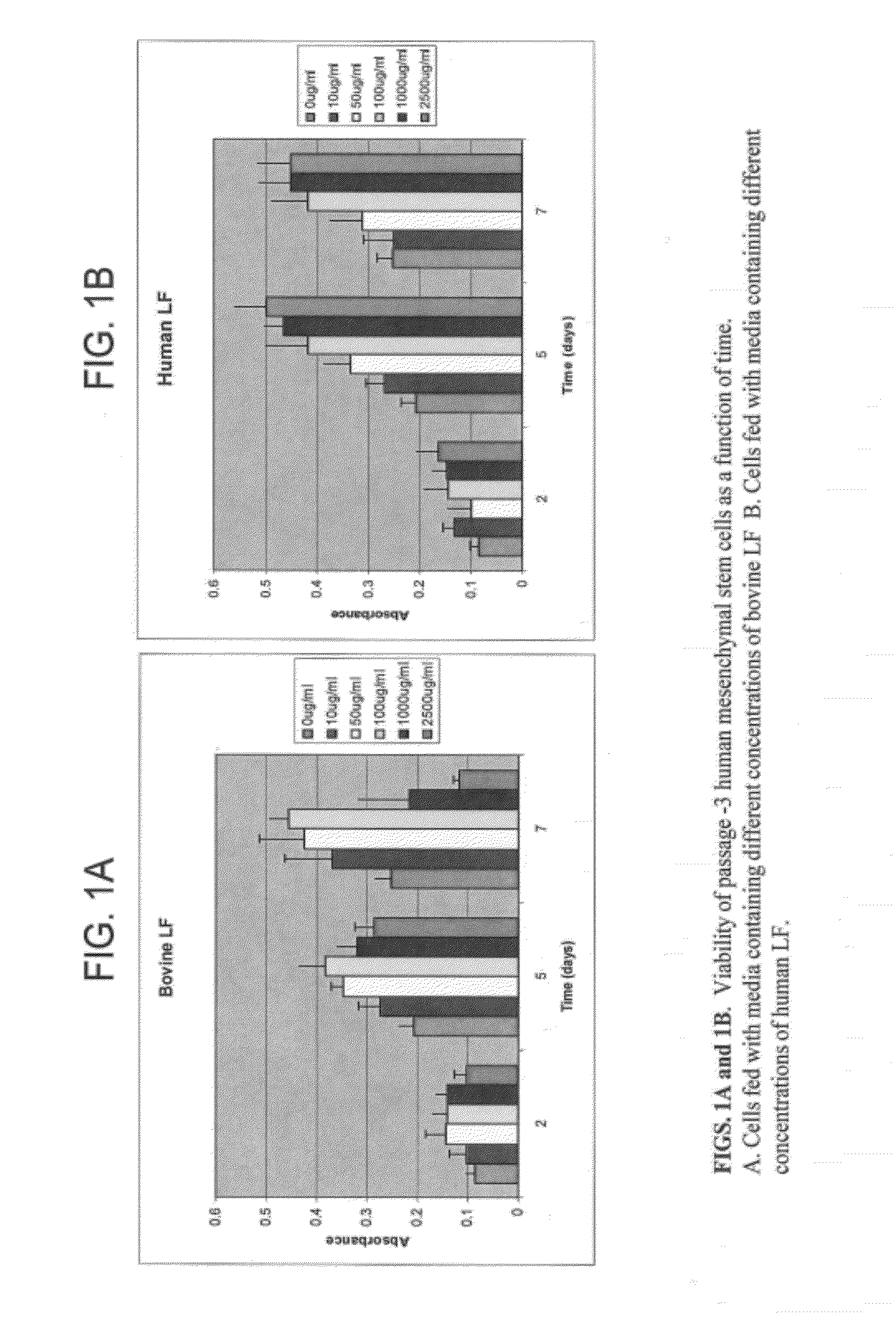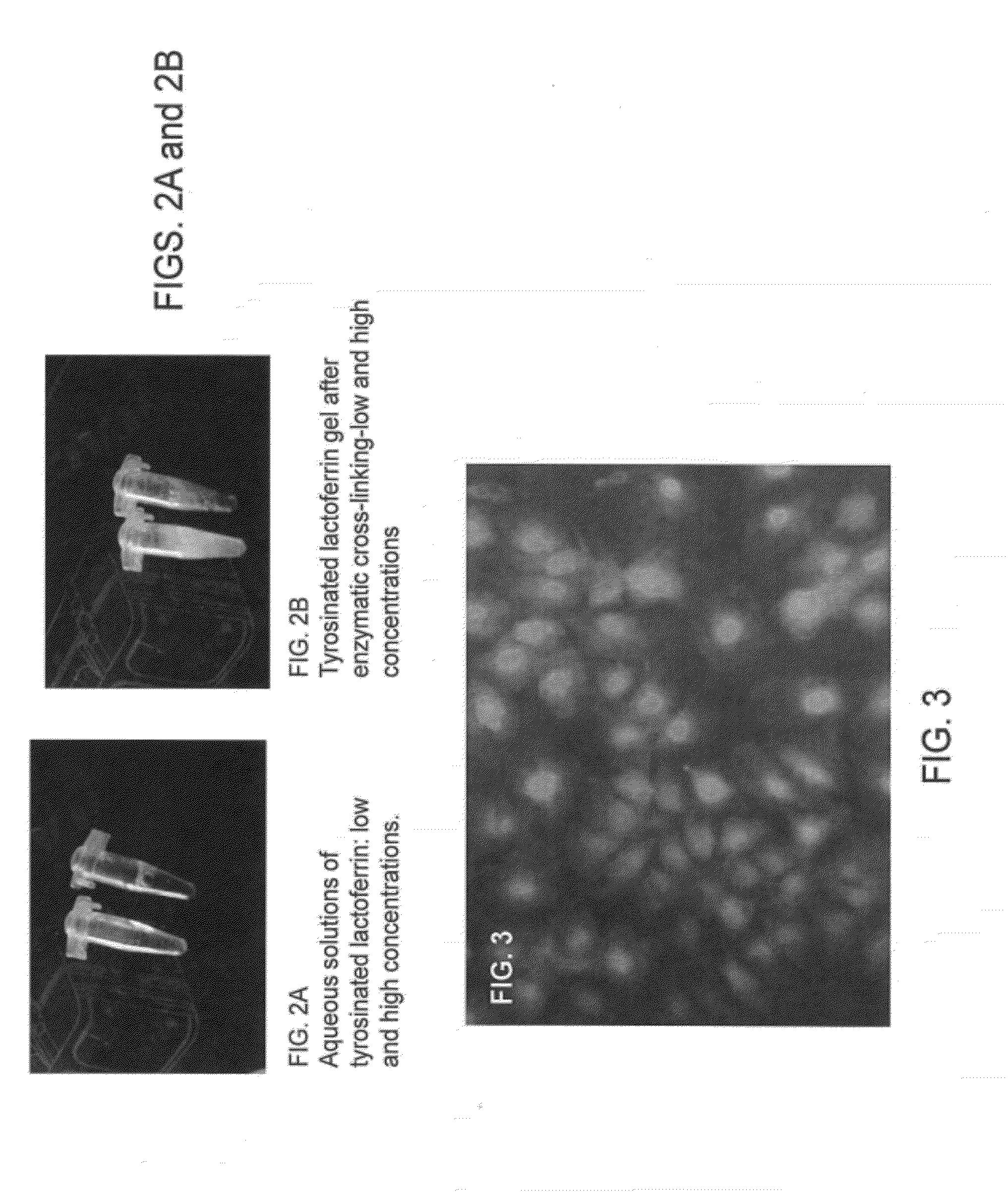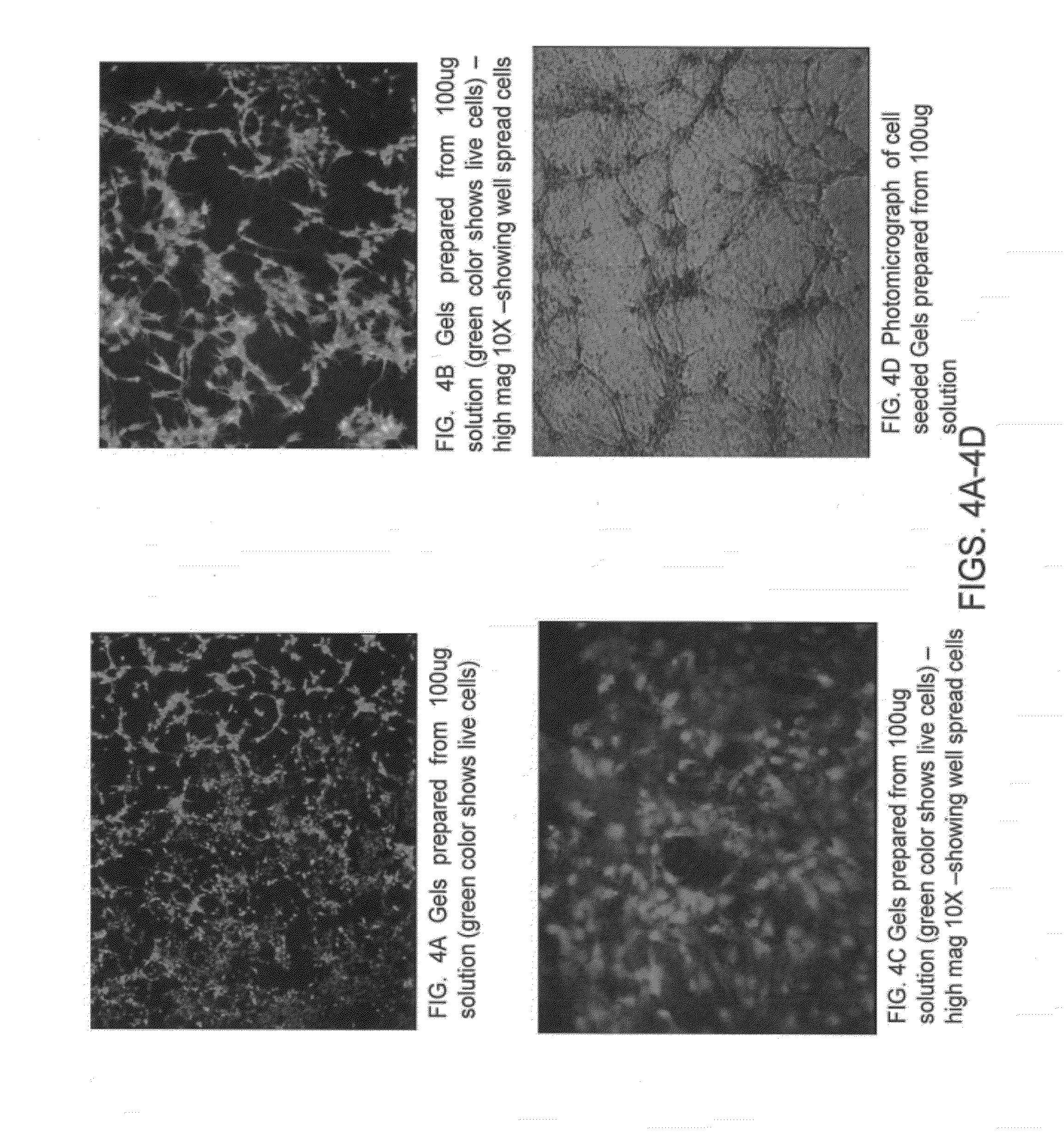Lactoferrin-based biomaterials for tissue regeneration and drug delivery
a biomaterial and tissue technology, applied in the direction of transferrins, prostheses, drug compositions, etc., can solve the problems of increased immunogenic response, limited donor bone supply for patients, and increased morbidity of autografts
- Summary
- Abstract
- Description
- Claims
- Application Information
AI Technical Summary
Benefits of technology
Problems solved by technology
Method used
Image
Examples
example 1
Demonstration of the Effect of Lactoferrin Concentration and the Source of Lactoferrin on its Biological Activity Using Human Mesenchymal Stem Cells
[0075]Mitogenic Effect of LF:
[0076]Cell studies were performed to evaluate the mitogenic effect of bovine and human lactoferrin using passage -3 human mesenchymal stem cells. Even though there are marked similarities in the structure and functions of bovine and human lactoferrins there are some significant differences also. The composition and three dimensional structure of human lactoferrin are slightly different from bovine lactoferrin and the most significant functional difference is that bovine lactoferrin binds iron more weakly than human lactoferrin. Since iron plays an important role in the biological functions of lactoferrin, they are expected to show some differences in their biological properties [Masson P L, Heremans J F. Lactoferrin in milk from different species. Comp Biochem Physiol B. 39: 316 (1971); Spik G, Coddeville B,...
example 2
Injectable Formulation from LF
[0080]An injectable matrix from LF was developed by utilizing the high concentration of carboxylic acid groups in the LF molecule. The injectable biomaterial design involved tyrosinating LF molecules and imparting chemical cross-linking of the protein via horse radish peroxidase (HRP) catalyzed oxidation of tyrosine groups using hydrogen peroxide (HP). The feasibility of tyrosinating LF using standard carbodiimide chemistry in the presence of tyramine was demonstrated.
[0081]Oxidative cross-linking of tyrosinated lactoferrin: The oxidation of tyramine, tyrosine and related compounds with peroxidase is a well known method [Gross A J, Sizer I W. The oxidation of tyramine, tyrosine and related compounds by peroxidase. Journal of Biological Chemistry, 234: 16711 (1959)]. As described herein, enzymatic oxidation of tyrosine groups in lactoferrin in the presence of hydrogen peroxide was used to develop an injectable gel formulation. Even though ˜20 residues / mo...
example 3
Bioactivity of Modified Lactoferrin
[0088]As demonstrated above, synthetic injectable compositions based on LF were developed. Described herein is the evaluation of he biological activity of the modified polymer. FIG. 3 demonstrates the viability of human mesenchymal stem cells on tyrosinated lactoferrin film prepared by HRP-HP oxidation (as described above). As can be seen in FIG. 3, the biomaterial film supported the adhesion and proliferation of human mesenchymal stem cells (green indicates live cells and red indicates dead cells).
[0089]The effect of lactoferrins of different iron concentrations towards preosteoblastic cell lines (MC3T3-E1) was also tested. The studies showed that irrespective of the iron concentration, the lactoferrins exhibit mitogenic and osteogenic activities. FIG. 15 shows the effect of recombinant human lactoferrin with different iron concentrations (holo, partial and apo) on MC3T3E1 cells proliferation after 24 hours stimulation measured by thymidine incor...
PUM
| Property | Measurement | Unit |
|---|---|---|
| Density | aaaaa | aaaaa |
| Density | aaaaa | aaaaa |
| Area | aaaaa | aaaaa |
Abstract
Description
Claims
Application Information
 Login to View More
Login to View More - R&D
- Intellectual Property
- Life Sciences
- Materials
- Tech Scout
- Unparalleled Data Quality
- Higher Quality Content
- 60% Fewer Hallucinations
Browse by: Latest US Patents, China's latest patents, Technical Efficacy Thesaurus, Application Domain, Technology Topic, Popular Technical Reports.
© 2025 PatSnap. All rights reserved.Legal|Privacy policy|Modern Slavery Act Transparency Statement|Sitemap|About US| Contact US: help@patsnap.com



